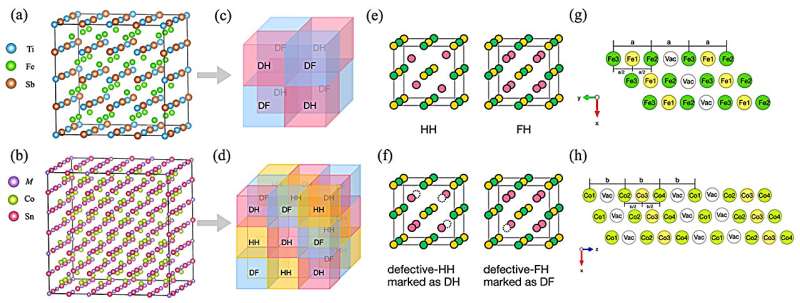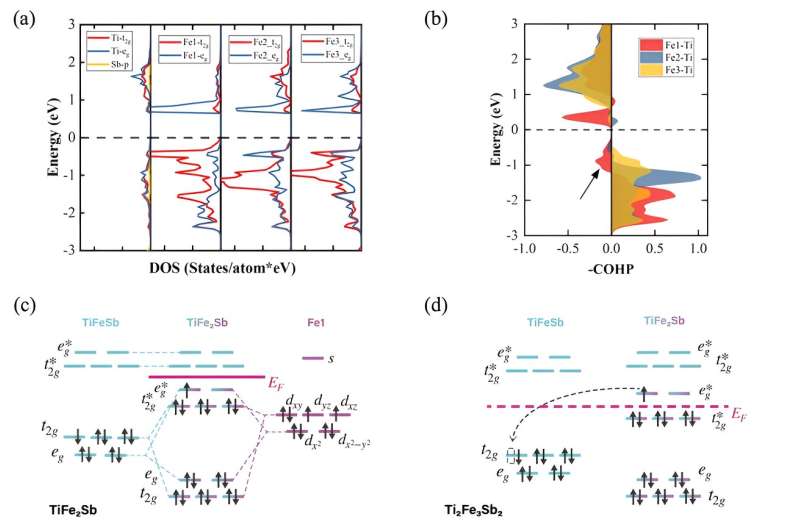This article has been reviewed according to Science X's editorial process and policies. Editors have highlighted the following attributes while ensuring the content's credibility:
fact-checked
peer-reviewed publication
trusted source
proofread
Research unveils Rubik's cube-like Heusler materials with potential for thermoelectric applications

Researchers from the Hefei Institutes of Physical Science of the Chinese Academy of Sciences have designed Slater-Pauling (S-P) Heusler materials with a unique structure resembling a Rubik's cube. These materials exhibit semiconductor-like properties and have potential in thermoelectric applications.
"In traditional semiconductor Heusler alloys, the number of valence electrons follows a specific rule. However, these S-P Heusler compounds defy this rule while still displaying semiconductor behavior," said Ti Zhuoyang, first author of the study, "we explained the underlying reasons for these phenomena in this study."
The results were published in Physical Review B.
Some off-stoichiometry Heusler compounds have been predicted to exhibit semiconductor characteristics. However, the bonding behavior in these S-P semiconductors and the relationship between their crystal structure and thermoelectric performance have remained unclear.
In this study, the team focused on two Heusler systems: Ti-Fe-Sb and M-Co-Sn (M = Ti, Zr, Hf). Within these two systems, they predicted the thermodynamically stable TiFe1.5Sb and MCo1.33Sn S-P semiconductors.
The researchers further explained the reason for the unique properties of these compounds.
Digging deeper, the researchers explained the unique properties of these compounds. In addition to the known half-Heusler (HH) and full-Heusler (FH) local geometries, these S-P structures contain defective-HH (DH) and defective-FH (DF) substructures. This is due to the partial occupation of Y atoms (Fe or Co) at the 4d Wyckoff site.
An intriguing consequence of this is the formation of second- and third-order Rubik's cube patterns in TiFe1.5Sb and MCo1.33Sn, attributed to the regular stacking of these substructures.

This unique arrangement is key to the redistribution of electrons within the lattice, leading to the formation of a bandgap. It also reduces the phonon Debye temperature and enhances anharmonic vibrations, which in turn suppress the lattice thermal conductivity.
As a result, these materials exhibit lower thermal conductivities compared to conventional HH and FH compounds. In particular, the calculated zT value of p-type ZrCo1.33Sn reaches 0.54 at 1,000 K, thanks to its high-power factor and low thermal conductivity.
"Our study foresees unique S-P Heusler semiconductors with exceptional thermoelectric capabilities and clarifies the physical mechanism driving their formation," said Ti Zhuoyang.
More information: Zhuoyang Ti et al, Bonding properties of Rubik's-cube-like Slater-Pauling Heusler semiconductors for thermoelectrics, Physical Review B (2023). DOI: 10.1103/PhysRevB.108.195203
Journal information: Physical Review B
Provided by Chinese Academy of Sciences





















